
By Gerry Barker
Photos/Video by Gerry Barker
In France, truffles are nothing to trifle with.
The cultivation and harvesting of these underground fungi, prized by chefs and foodies alike, is big business here. France produces around 30 tons a year, and much of that production in is the southeastern region, where our tour bus happens to be traveling.
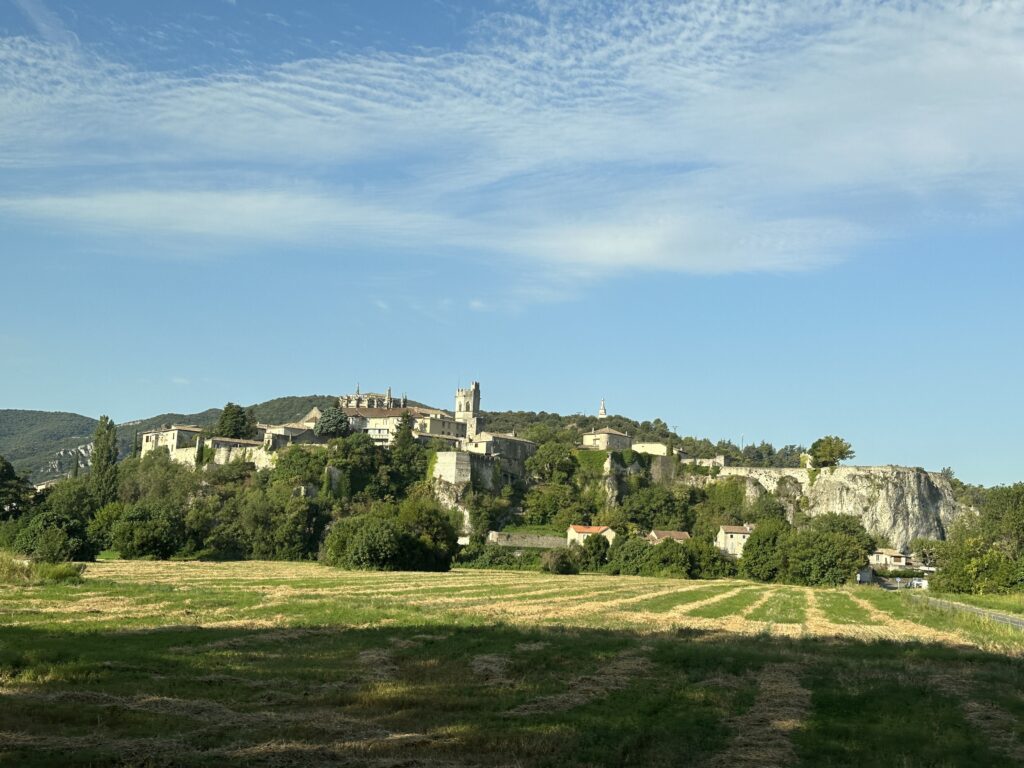
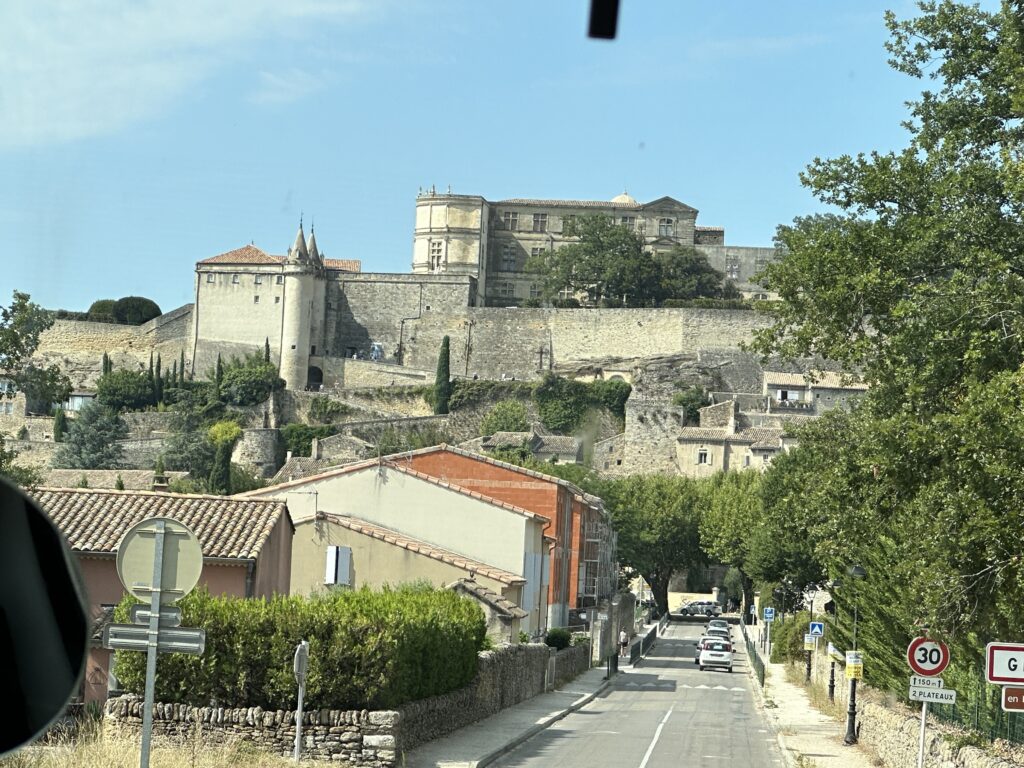
Our river ship, the AmaKristina, is docked in Viviers (viv-je), a quaint, hilltop village where the imposing Viviers Cathedral overlooks the Rhone River below. Our destination today is the La Rabassiere truffle farm, near the town of Grignon, where we’ll get an up close and personal look at truffle farming.
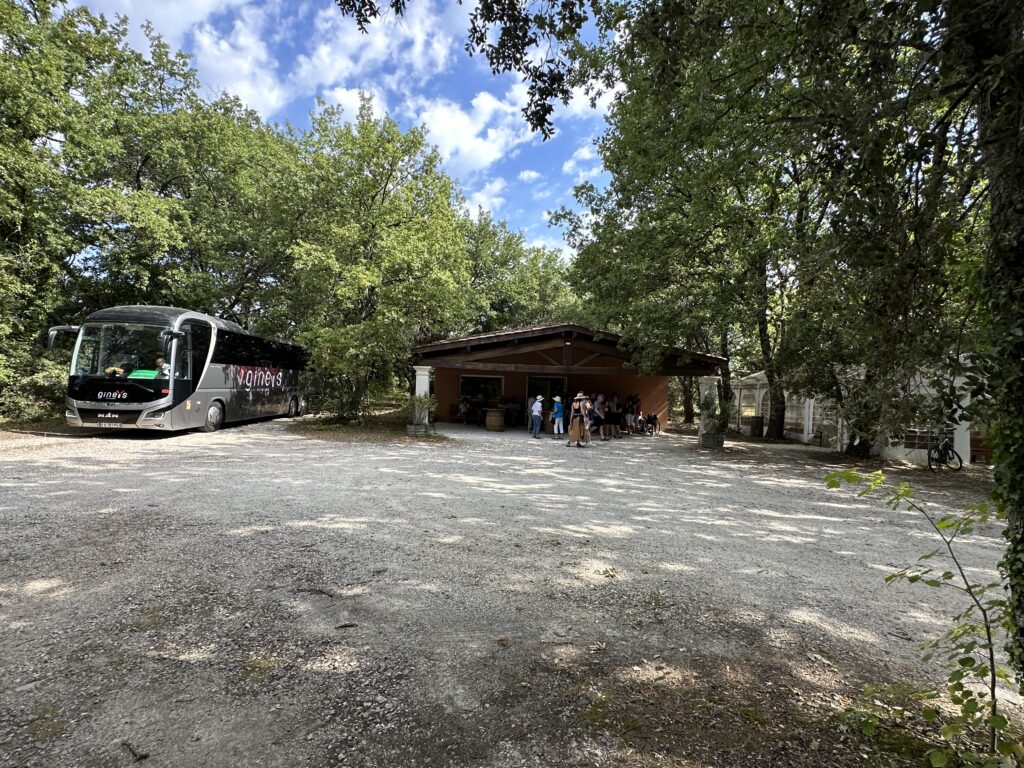

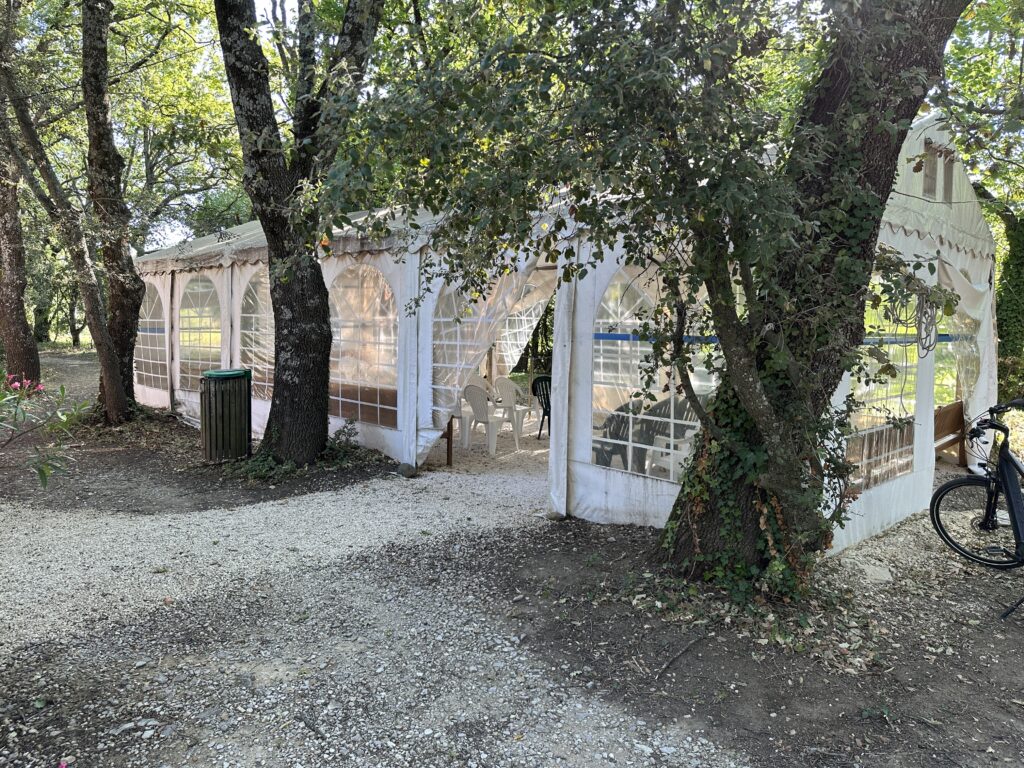
Upon arrival, we are ushered into a tented area where our host and owner of the farm will tell us about the truffle business. Speaking in French, with translation by our tour guide, we learn he is the third generation to farm here, and was actually born in the nearby farmhouse.
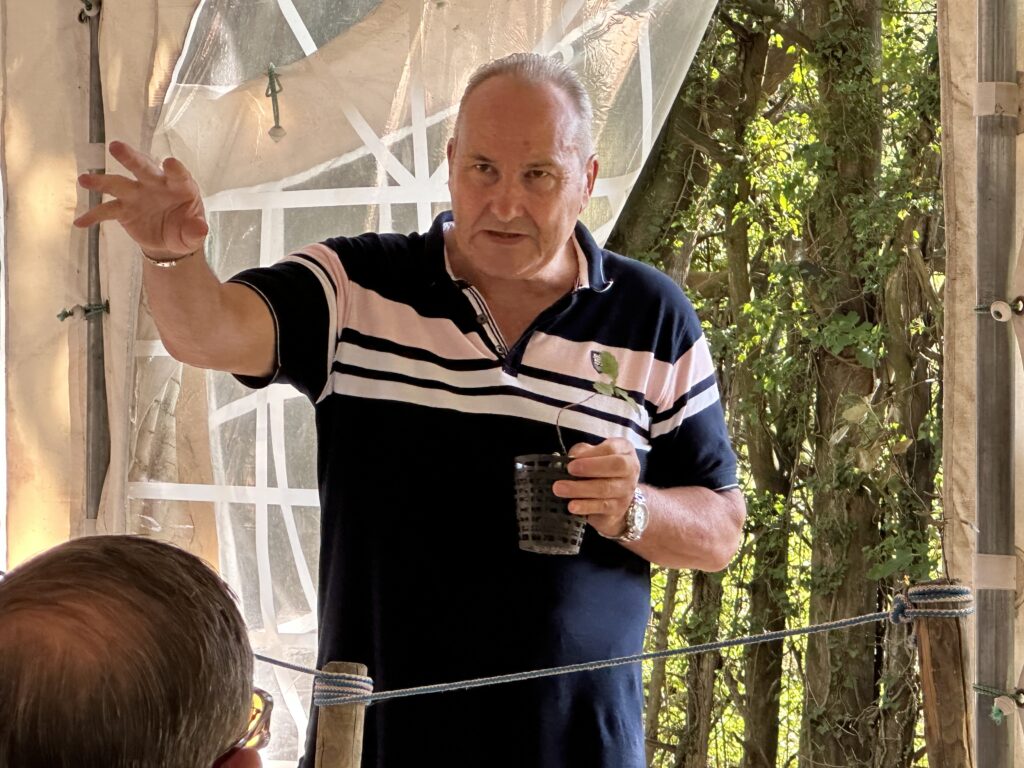
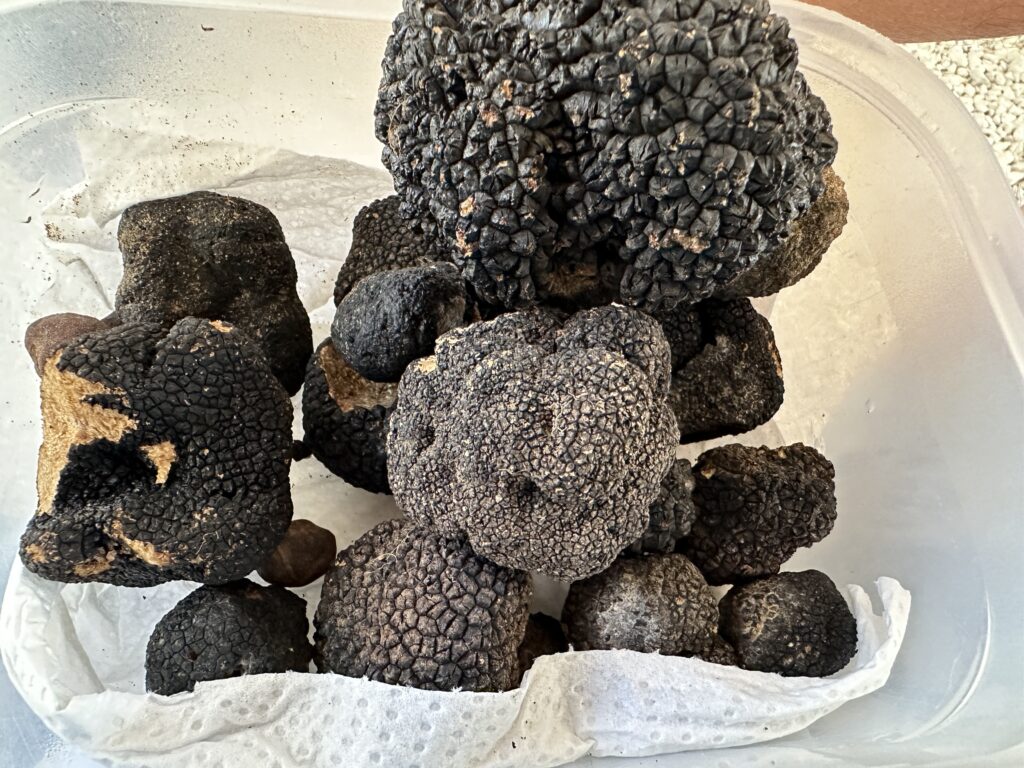
This area boast 650 truffle producers, and in peak season, they produce as much as 1.5 tons a week. Right now, the summer truffle season is coming to an end, and the winter truffles — which are the second most consumed truffle in the world — are beginning their growth.
He has over 6,000 trees — green and white oaks — on 75 acres, and it takes 15 years for new trees to begin producing truffles, which grow underground on the roots. Replanting trees for the next generation is how the business endures, and since he took over from his father, he has planted more than 1,000 trees, with each tree producing 1 to 2 kilos a year.
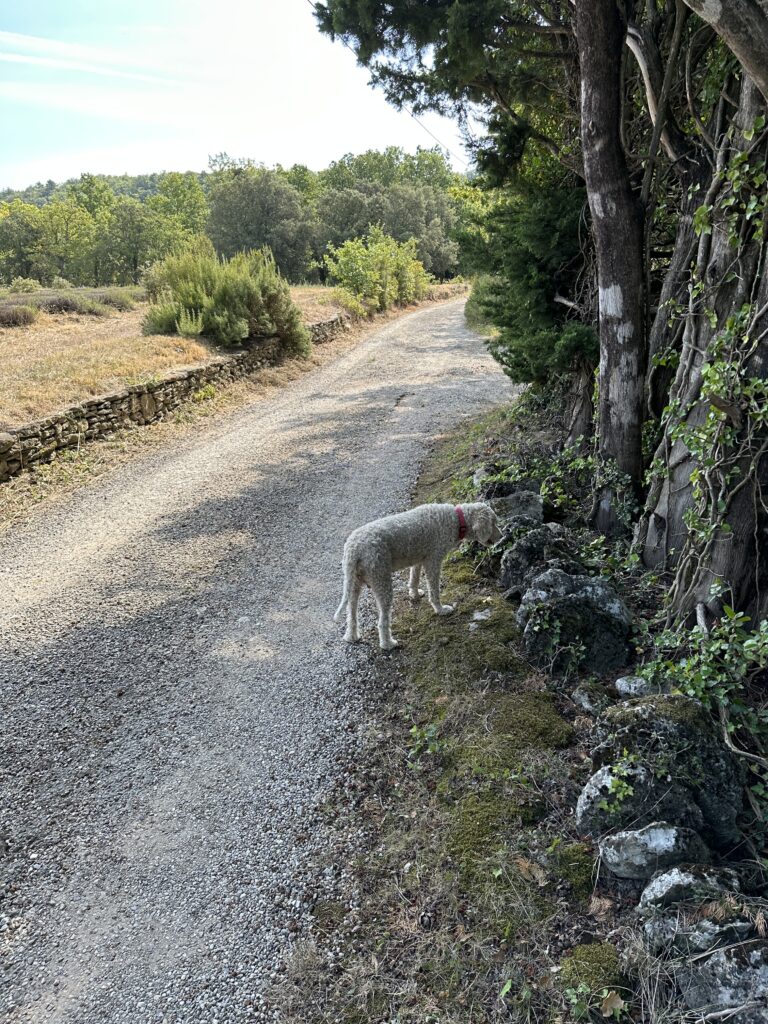

Wandering around our chairs is one of his truffle dogs, a white Italian hunting dog named Emy. She is 13 years old, and one of the three dogs he uses to find the truffles. But wait — don’t they use pigs for that?
Yes, pigs are still used by some farmers, but they are more expensive to maintain and will sometimes munch on the truffles. In this area, he says there are more than 1,000 truffle-hunting dogs who can utilize their keen sense of smell to find the treasured mushrooms.
But enough talk — let’s go find some truffles.


With Emy leading the way, we walk to a tree row and watch as she circles one of the oaks. The truffles can be anywhere from the base of the tree to the outer radius of its roots. Soon, she starts digging, and within minutes, we are looking at the walnut-sized truffle.
Full disclosure: With the summer season winding down, the owner had placed these there earlier for the demonstration, but the process is the same. Emy is rewarded with a treat — very important to do — and is ready to dig some more. By the way, when truffles are not ripe, they don’t smell, so the dogs can tell the difference.
They are more than 40 truffle varieties, and Italian truffles are the most expensive, bringing up to 3,000 Euros per kilo. Generally, white truffles are the most valued over the black ones.
While rats, insects and climate change are among the threats to the business, there have been instances of robbers as well. To that end, the region has established a “truffle police” unit to maintain security.
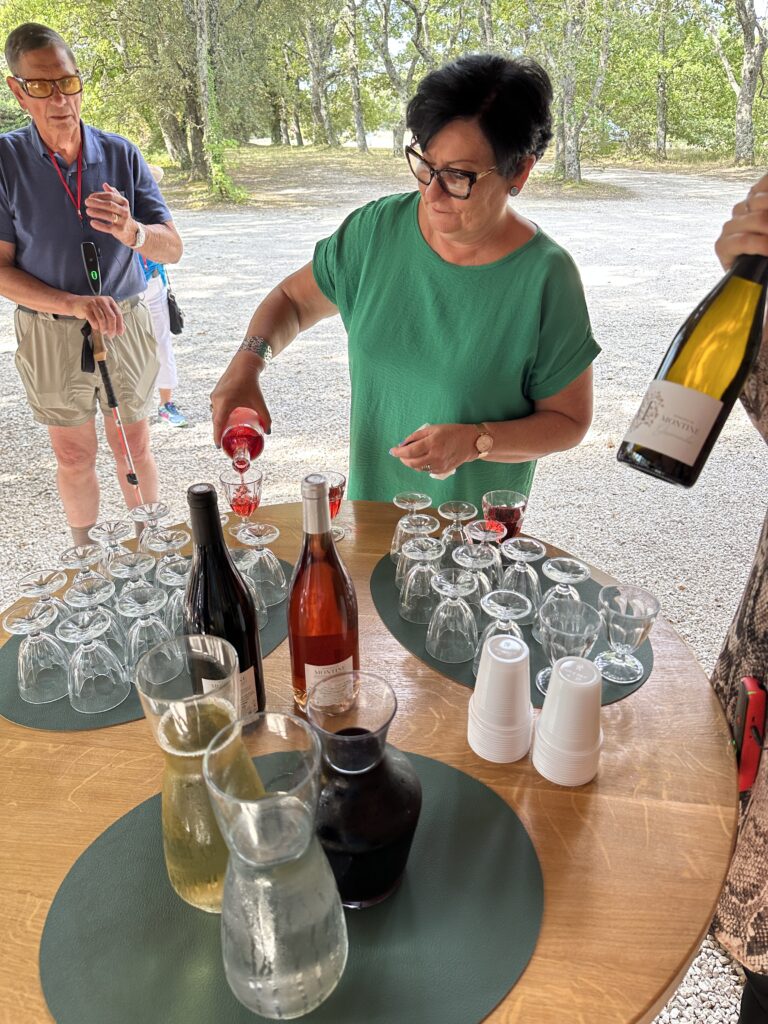
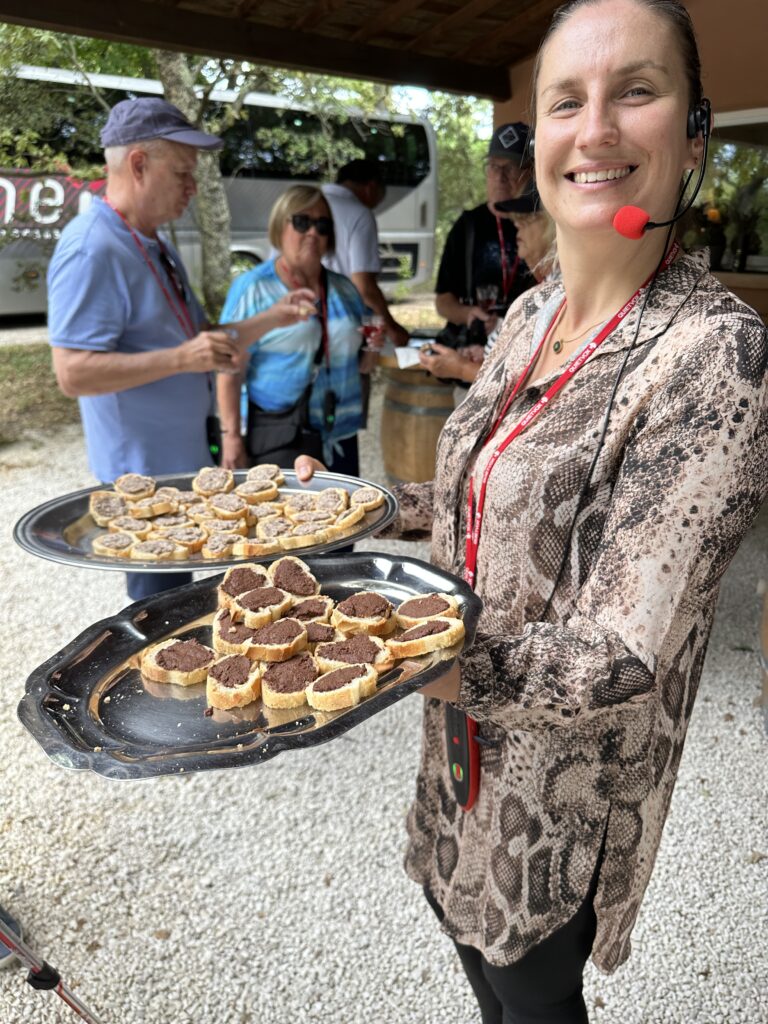
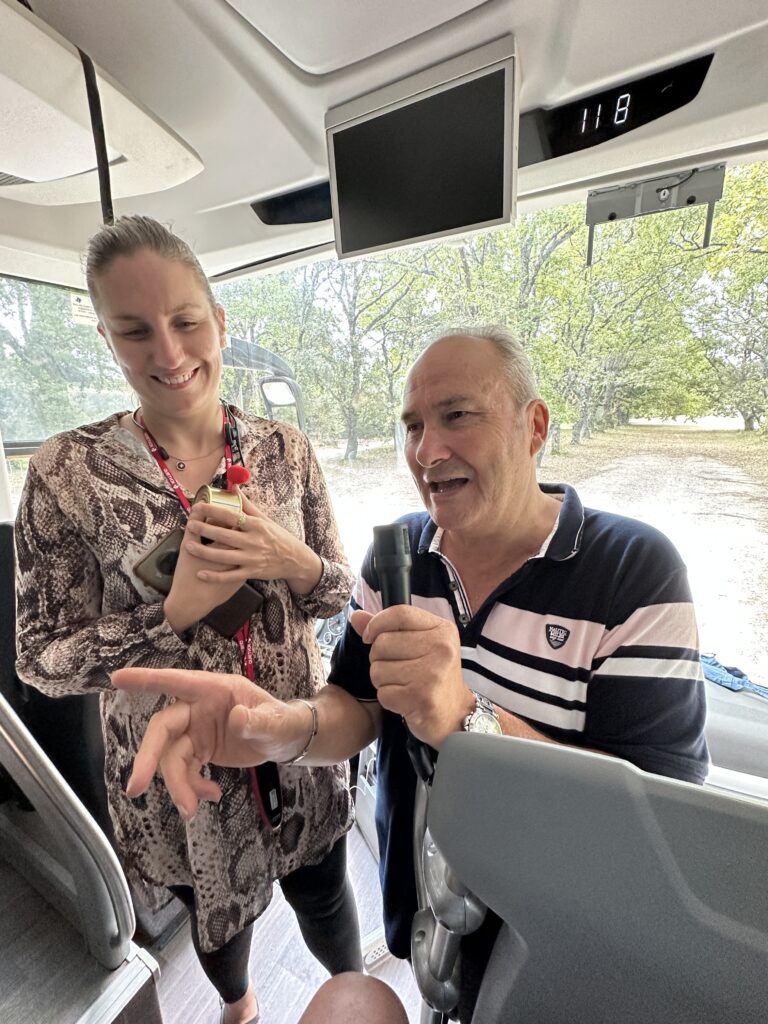
With the truffle hunt over, he head back to his shop, where his wife has truffle treats and wine waiting. As we board the bus to leave, the owner enthusiastically takes the microphone from our tour guide and wishes us all safe travels.
While he’s not sure his son will follow in his footsteps and manage the farm, the stage is set for the next generation of truffle hunters. To all of us who enjoy this gastronomic delight, we say “Good hunting!”


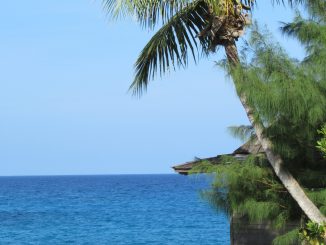

Be the first to comment